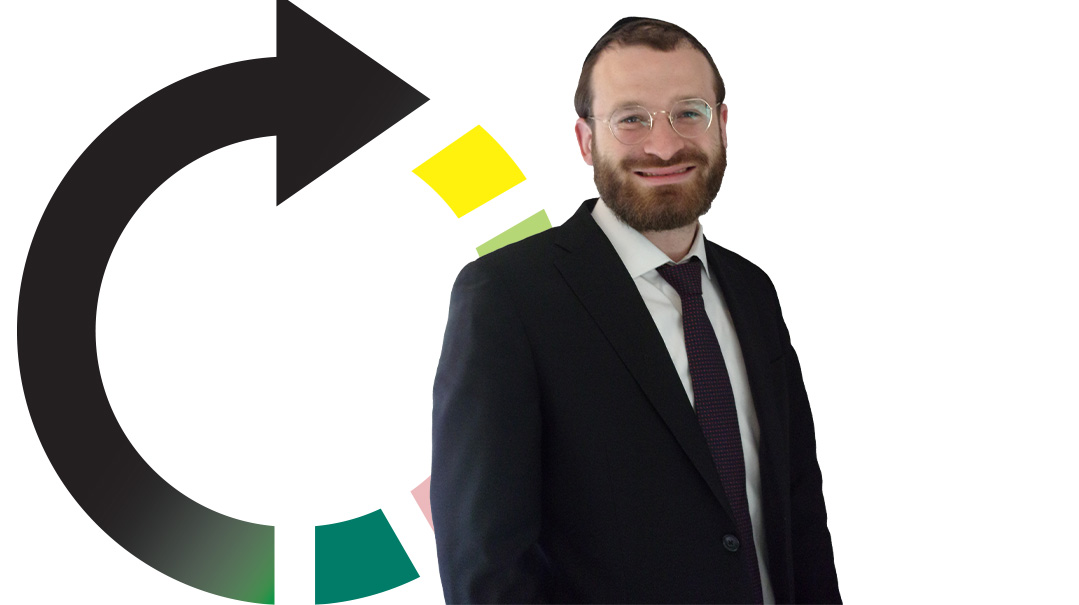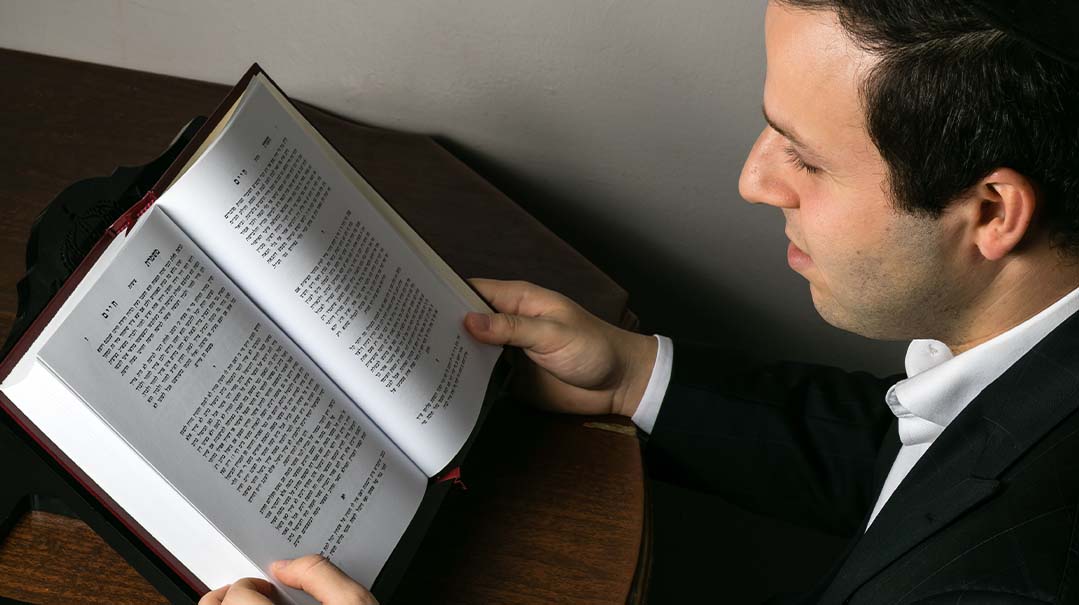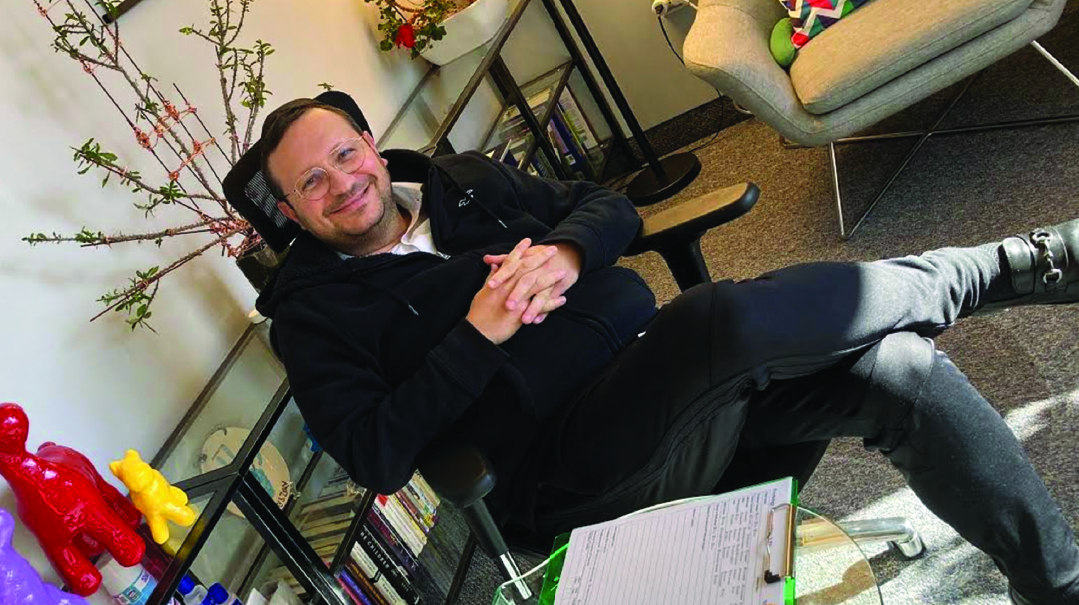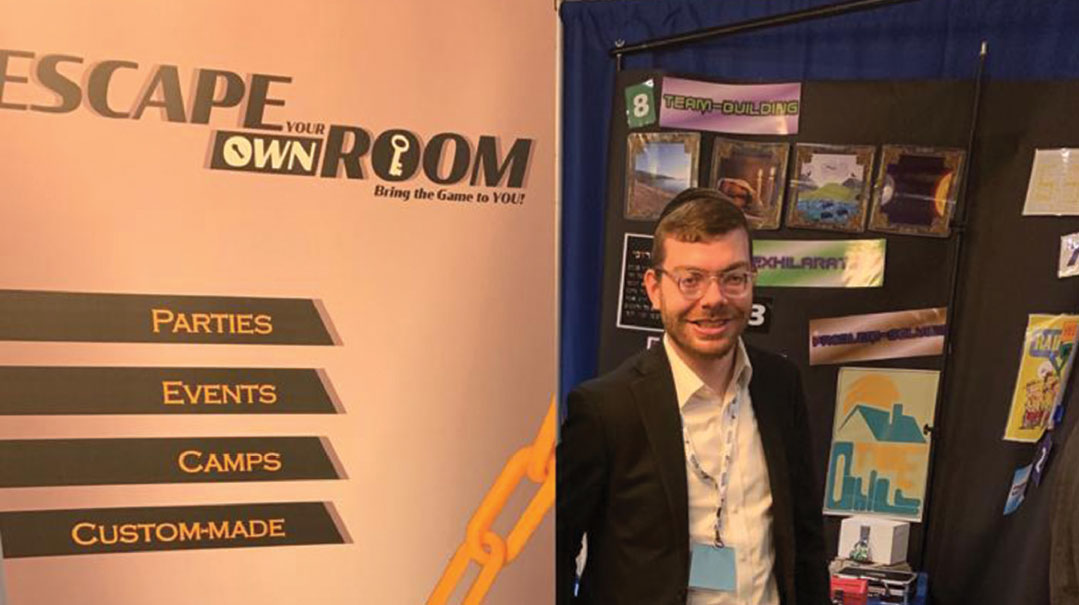Feather Friends


TEACHABLE SKILL “Writing with a kulmus on a klaf can be compared l’havdil to spreading cream cheese on toast — the same flow and texture of movement the twist of the wrist the way you hold the kulmus. I can teach a guy a lot more about safrus by peeling vegetables than with ink — it’s not an exotic skill”
Rabbi Eliezer Adam is the dean of Machon Melechet Shamayim a school for sofrei sta”m. He is based in Beit Shemesh.
What I Do
I teach safrus online.
What That Means
The course material is on video and I also Skype with each student to work on individual skills. I do still teach frontal courses in classrooms all over Israel and sometimes groups of guys get together and ask me to teach them but as far as I know I’m the only teacher who does this remotely. Teaching online has a tremendous advantage because the real work in safrus training is consistent practice. In a classroom students tend to rely on the classroom presentation but a student online gets his act together because it’s easier to focus on the homework and the practice — it’s all up to him.
What It Takes To Teach A Hands-On Skill Online
Decades of teaching and more than 2500 students have taught me to diagnose onscreen down to details such as the sofer’s position in the chair where his table lamp is and whether a difficulty calls for more tutoring or simply more practice. From a photo of a sofer’s kulmus — that’s his writing utensil the literal translation is “reed” in Greek although nowadays people use turkey feathers or bamboo or something artificial made out of plastic or metal there’s no halachic requirement about it — I can tell much about his writing technique and even his posture. Is he leaning on one elbow or two? Is his back touching the chair or does he sit on the edge? What’s the angle of his grip? I like to say I look in somebody’s mezuzah and I know what he had for breakfast.
How I Got Into This
When I was 12 and looking into getting my first tefillin I became intrigued by the halachos and skills involved in making them. My inquiries eventually led me to a group of bochurim who were learning safrus. I was mature for my age and very self-sufficient — they thought I was 16 and let me join them.

Safrus seems like something they can fiddle with on the side to make money. But money doesn’t come in when you can make mezuzahs it comes in when you do write them and sell them the same way it works in any other business
I didn’t get semichah until after my bar mitzvah obviously and I continued studying the subject thoroughly over the years. In yeshivah and later in the army I gained a reputation as the go-to guy for sta”m. When I was in my thirties the Belzer Rebbe requested that I put my course on video to teach his chassidim which I gladly did. I opened Machon Melechet Shamayim in the 1990s.
My Student Body
They’re from all over: the US Israel Mexico South Africa Australia Germany Holland and India. There are three basic types: one the kollel yungerman looking for a parnassah that fits his schedule and lifestyle; two the artistic soul seeking to connect to Hashem through the mitzvos of sta”m and the mystery of the letters; and three the individual who’s finally found the time to fulfill a lifelong dream of writing his own sefer Torah. People often ask what talents one needs for safrus. The basic answer is that anyone can learn it but not everyone has the patience and discipline to do it day after day for long periods of time. That’s why most of my students continue writing only part-time.
Oops! We could not locate your form.







